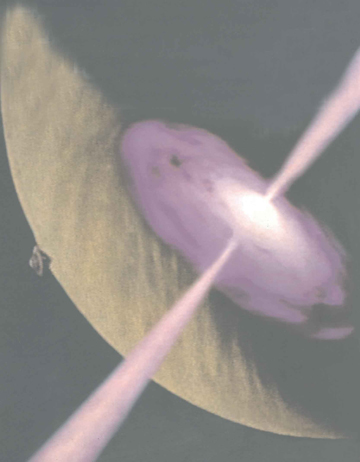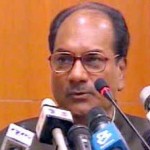I have heard this saying, “one who can master time masters everything.” How do you master time? Obviously one cannot stop time. Or at least, as yet we do not know how to. However, there are ways which enlighten what time can unfold for us, provided we are looking for them. Another, more interesting and perhaps little dangerous way is to nudge time so that it bids what you hope it to do.
A tall order indeed, given that the world that we live in has what is becoming painfully clear – an inherent interaction complexity that is increasing not only in the number of interaction dimensions but the intensity of each dimension.
The interconnected world and interconnecting world gives us better capability, growth and potential prosperity, however, it is making us more and more prone to events that can potentially lead us to greater crisis and disasters. In fact, we are entering an era of greater and bigger crisis and disasters as our interconnecting social, geo-political, economic and technological systems becomes interconnected in layers and hierarchies of increasing complexity.
India in a complex world
The India after independence followed socialist architecture. One of the key tenets was a window of five years plans. The “Panch Varshiye Yojna” – the five year plan – for the nation was supposed to give us a planning and execution window to govern the diverse nation that India emerged from the centuries (almost 800 years of Mughals and British Raj) of foreign rule and exploitation of people, resources and culture. India emerged broken into two different countries – an India that was searching for its identity in the world struggling to come back to sanity after the horrific Second World War and a Pakistan that had in its genetic roots – “Not-India” DNA. India chose to become a republic and created a written constitution which can be evolved – along with fundamental rights and duties of its citizens.
The architecture of India as the largest democratic republic with biggest written constitution – although a mixture of “best practices” of other nation’s constitutions – just in three years after independence was a great achievement. Built-in possibility of amending the constitution for future situations through the two houses of parliament clearly indicates the foresight of our forefathers. Democratic republic India has stood the test of time in close to 7 decades after independence.
The largest functioning democracy has passed true test of time due to the architecture of continuous evolution, adaptation and adoption of best practices in the diversity that India has created and embraced since Independence. Of course, the “other nation” – Pakistan – due to its “not-India” architecture, Military Rule and after Zia-Ul-Haq’s reformatting of the country into an “Islamic” country, has taken a peculiarly divergent, narrower path to the future. The four wars of different dimensions India-Pakistan has fought – 1948, 1965, 1971 and 1999 – are reflection of continuous challenge the relationship of the parts of divided India face.
In 1990s world changed. The world became more connected and India was forced to open up its economy as technology was unleashing new forces of communication, connectivity and interdependence that no one had any clue about its impact.
The unipolar world that demise of USSR gave us with 1991 gulf war putting USA as much more powerful than any other country in the world for some decades to come, didn’t gave an indication of emergence of multi-polarity and a clear emergence of China and to some extent India in two decades after Gulf-war.
Despite the inherent contradictions of India and the controlling mechanisms of outside forces to rein in India, our constitution, governance, and society has survived the possibility of even “breaking India” that many outsiders and some insiders secretly hoped and may harbor even now. Since 1947 Indian subcontinent has been divided into three independent countries – India, Pakistan and Bangladesh. As newer, potentially speedier and psychologically single-minded fanatic forces emerge stronger, India as we know today may get divided further into more independent countries, say, in next four to five decades.
Unless we change the way we operate India.
Intelligence, Foresight and Design
Evolution works on adaptation. Adapting to changes over time. India has been an evolutionary country. Our ability to adapt, adopt and adjust to change has been exemplary. Hence we have survived as ancient civilization by assimilation of even all those who attacked us and even subjugated the nation. However, the flexibility of our society and structure gives everyone a unique opportunity to blend structurally into the fabric of diversity.
The other extreme – of structuring the country and society into constrained single pre-defined “religious” constitution – that was written 1500 years back and doesn’t have any option of evolution versus a modern constitution written in 1950 with possibility of update and evolution, is the difference that is starkly visible in Pakistan and India. Religion has its own place and perhaps an important place. However, when religion becomes a society in a world that is getting more and more interconnected, it is a recipe for simmering crisis, clashes and conflicts.
India despite its five years plans or perhaps due to the plans and our deep adaptable social fabric has been a reactive country. We react. We adapt to change. We adopt the change, provided it is clearly visible and impacting. It is rare, that India initiate a change that will impact the world. As a country, we have not designed change, so far. May be that was right and maybe that’s why Indian democracy, diplomacy and dependencies worked. We were always responding to changes created by others – in technology, in global politics and perhaps most visibly in global power hierarchy.
Ministry of Intelligence, Foresight and Design
To create change proactively requires a change in our genetic makeup. Perhaps it is time now to “mutate” India into a country that creates, design and shapes the needed change.
It may look strange, but India needs a separate ministry of Intelligence, Foresight, and Design. Foreign affairs intelligence, home intelligence, industrial technological intelligence besides economic intelligence should be inputs to the ministry and its job will be to analyze and create actionable foresight inputs for all ministries to create proactive courses of action. The basic architecture has to be designed for India of the future. What India strives for should be the key question to explore.
J.S. Gero, in Design Prototypes: A Knowledge Representation Scheme for Design, AI Magazine, Vol. 11, No. 4, 1990 described, “The act of design is a“ goal-oriented, constrained, decision-making, exploration and learning activity which operates within a context, which depends upon the designer’s perception of the context”.
The new proposed ministry has to gather multi-dimensional intelligence. Glean key insights from these to start developing foresights of the future world. These studies, exercises and continuous exploration and learning should be tested in the crucible of national interests of India in a dynamic world. However, all these should be input for the goal-orientation, of the India of say 2030, 2040 and 2050. Perhaps, the greatest learning India should take from China is the Deng’s architecture of late 1970s – a new kind of superpower by 2050.
The goal of 2050 was worked backwards to the present and 10 years goals were set. The goals were written down in terms of China of 2000, 2010, 2020 and so on. Then the goals were worked backwards into initiatives – mechanisms to achieve the goals.
The Indian ministry of IFD perhaps has to do it differently. Democracy requires involvement of diversity of opinions yet operating in a world that is changing, churning and curling both from inside and outside. We have to define India Goals. These goals have to be built on national interests. The nation as it exists today should be the input for defining and developing long term goals. India of 2050 – do we have a view today?
Can we create a view of 2050 India? Then work backwards towards gathering intelligence, gleaning insights and developing foresights for designing India of 2050 through India of 2020, of 2030 and of 2040.
From Operating Country to Designed Nation
For close to seven decades our constitution has given us an “operating” architecture of India. How to operate India? Somehow, it has worked in keeping India operational. However, as we know, just to keep operating a system is not the only way to sustain any organization. It is time to build the nation on the operating principles that our constitution gave. It is time to invent India of 2050. To invent India – to conceive that India of 2050, we need to develop foresight. That is where India needs to design the conceived and invented India of 2050, today.
The ministry of intelligence, foresight and design, will create the Designed Nation which has so far been an operating country. And yes, one can master time through intelligence, foresight and design.





